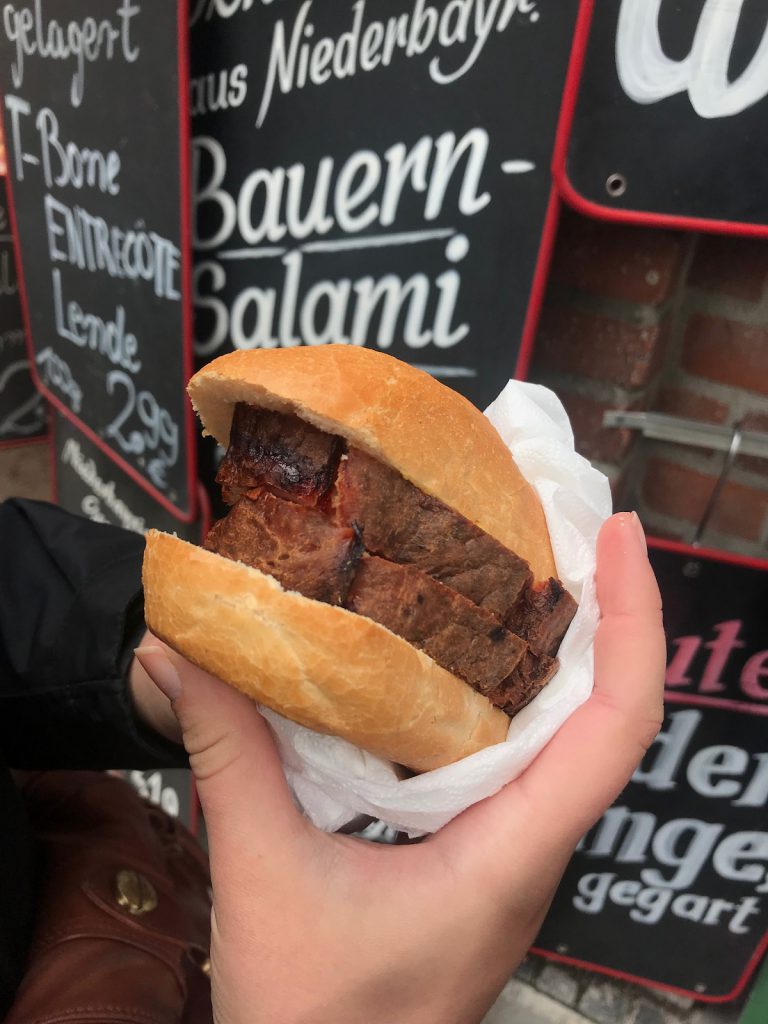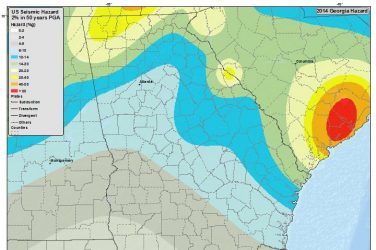The aroma of fried schnitzel and freshly baked pretzels fill the crowded streets of Munich, making my stomach rumble and mouth water—it’s the smell of street food. According to Bavarian State Ministry of Science and the Arts,
Why It’s Newsworthy: Street vendors and food trucks bring convenient, affordable and authentic Bavarian food to tourists and locals who are on the go but still want delicious food.Traditional Bavarian food is generally hearty and very filling, with many meat and potato-based dishes.”
I tried several popular street food staples to see if these meats and potatoes were just as good on the go.
Weisswurst
Weisswurst, made up of veal, pork and seasonings, is one of the staples of Bavarian cuisine. According to the article by Edeka it states, “The Weisswurst is a real Munich specialty and stands for many people in Germany as a symbol for the cuisine of Bavaria.” The wurst is white and covered in a very thick, inedible casing. You might spot a tourist trying to eat the casing, and I have to admit that I made this mistake myself. Once I cut the almost transparent casing off the wurst, the juices from the veal and pork poured out, and with it the aroma of different spices. This wurst is eaten around the clock in Germany. According to Weißwürstekochen.net, “It is indeed a tradition in Bavaria that white sausages are consumed in the morning. Usually from 10 o’clock and in any case before 12 o’clock noon. In principle they are a second breakfast in Bavaria. But not every Bavarian adheres to this tradition and so is the Bavarian Weißwurst in restaurants available at any time.”
Schweinshaxe
Schweinshaxe, a deep fried pork hock with flaky, crispy, golden brown skin may not be so easy on the eye, so I was surprised when I took my first bite. It is a huge piece of pork shoulder that still has the bone in. After I peeled back the layer of bubbly skin, I was left with tender, fall-off-the-bone meat. The meat is so delicate it melts in your mouth, and it’s bursting with flavors.
Schnitzel
Schnitzel is a well-known traditional Bavarian dish. When I was walking around the different street food markets, I noticed it at just about every stand I passed by, but they all looked a little different. The meat is pounded out paper thin. This makes the meat juicy and mouthwatering, surrounded by the crispy fried crust. Its golden brown layer of breading nearly melts as it hits your tongue.
Spätzle
According to GermanFoods.org, “Spätzle is made from flour, salt, water and eggs and is eaten as a side dish in place of rice, potatoes or pasta.” I ate Spätzle for the first time as a side dish to Schnitzel. I could tell that the noodles were different than anything I had eaten before. The texture was thicker and more dense than a regular noodle made from flour. The noodles are made out of fresh eggs and covered in a thick and creamy sauce that is kind of like an American thick and creamy macaroni and cheese sauce. Spätzle comes in different varieties and chefs can creatively put their own spin on it. Crispy, thick cut bacon, freshly cut green onions, and grated creamy cheese are commonly used to dress up this dish and give some color and crunch.
Munich street food gives tourists and locals the ability to eat traditional Bavarian food on the go all year round. Whether it’s a hot summer day or a cold, crisp evening during the Christmas season, street food is always on the menu.
Ansley Parker is a senior majoring in Advertising in the Grady College of Journalism and Mass Communication at the University of Georgia.








